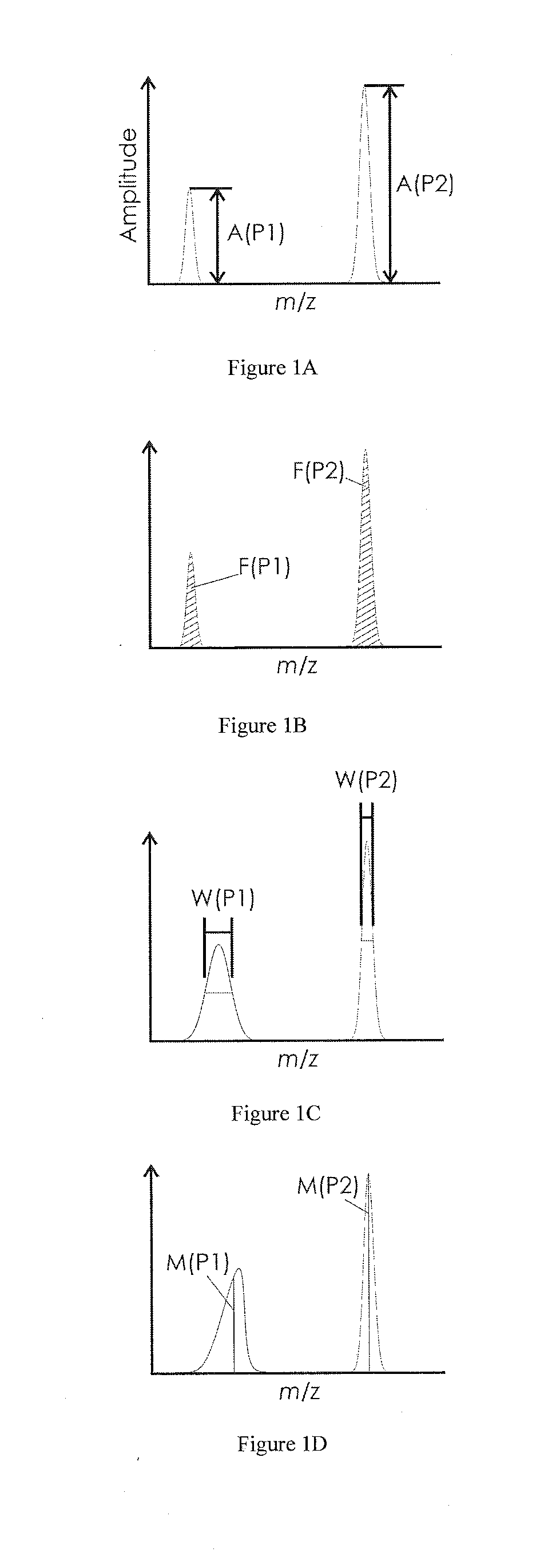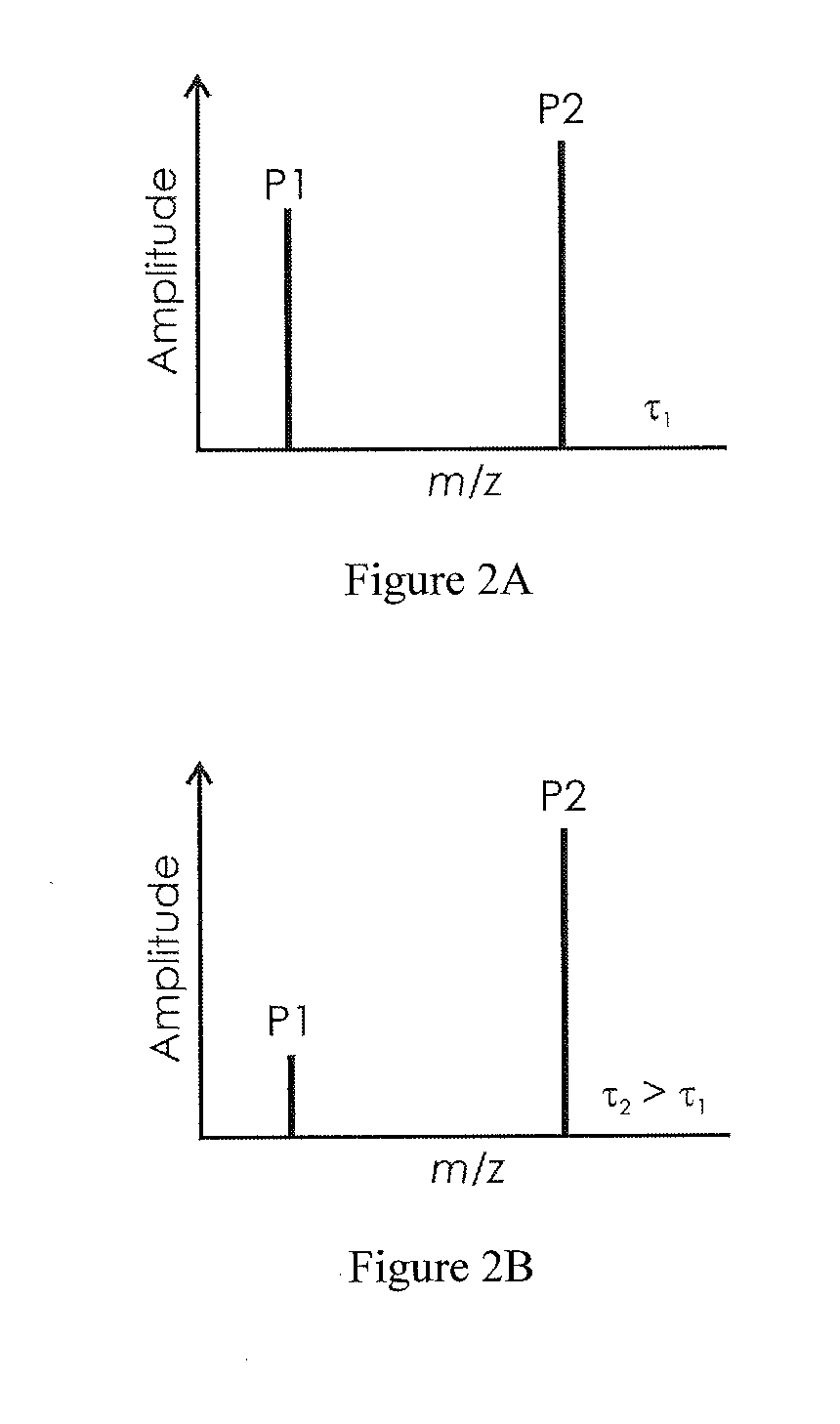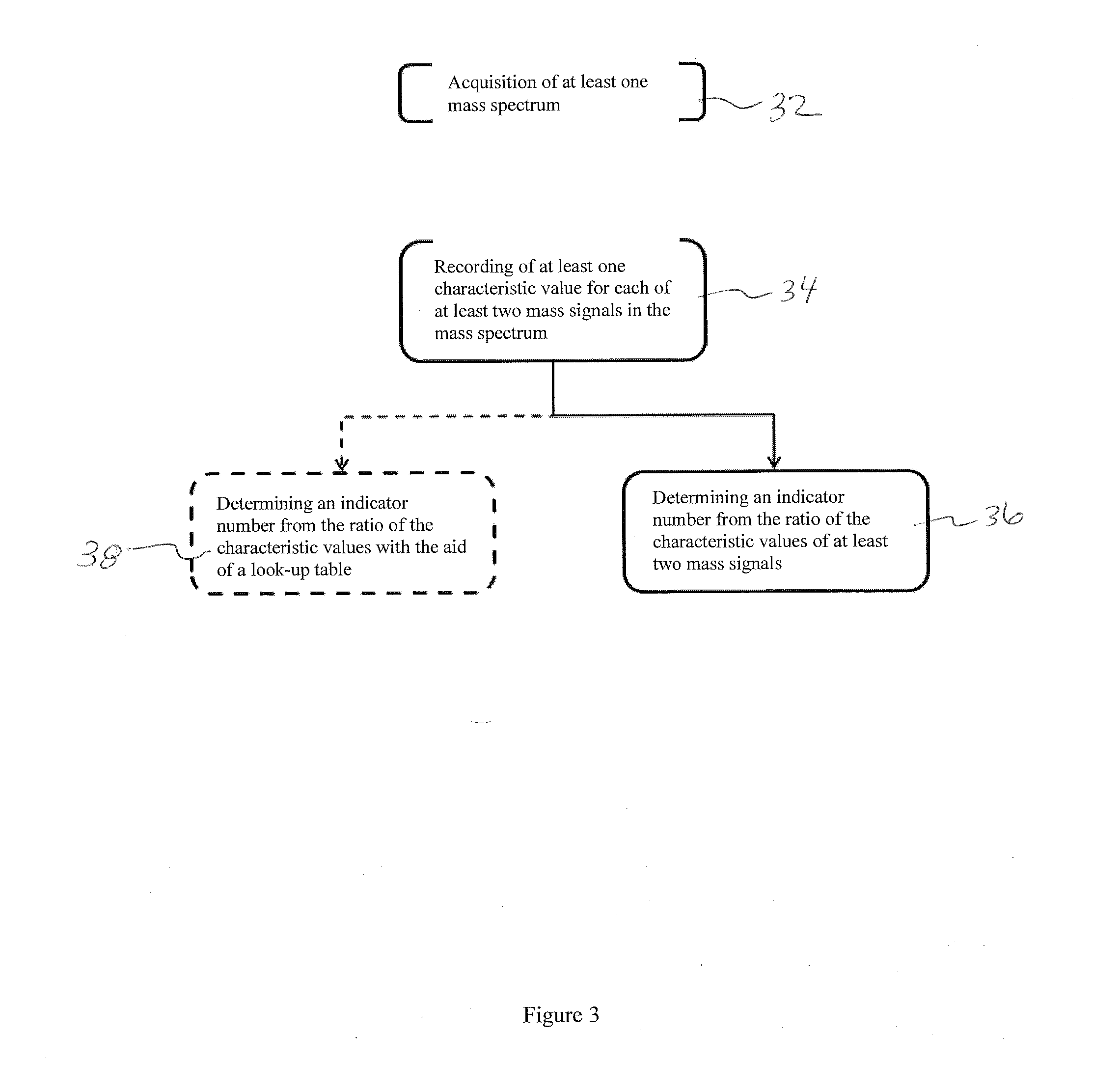Assessing the contamination in a mass-spectrometric maldi ion source
a technology of mass spectrometry and maldi ion source, which is applied in the direction of mass spectrometer, separation process, dispersed particle separation, etc., can solve the problem of not providing any information about the possible presence of interfering electrostatic effects, and achieve the effect of increasing the length of operation, facilitating detection, and clearer to s
- Summary
- Abstract
- Description
- Claims
- Application Information
AI Technical Summary
Benefits of technology
Problems solved by technology
Method used
Image
Examples
Embodiment Construction
[0035]FIG. 1A shows a mass spectrum with two mass signals P1 and P2. For clarity, only two mass signals are shown. A real mass spectrum usually contains a large number of different mass signals from which an appropriate number of suitable mass signals may then be selected. P1 here has a lower mass-to-charge ratio m / z than P2, and also a lower amplitude A(P1) than the amplitude A(P2) of P2. The amplitude A(Pn) here indicates the signal's maximum above zero. The mass signals are depicted here as symmetric curves for simplicity. It is obvious that they can also be asymmetric, however. If the amplitudes A(P1) and A(P2) are expressed as a ratio, where the value of the mass signal with the higher mass-to-charge ratio should be in the denominator because it is less sensitive to electrostatic interference field effects, an indicator number is produced which can be used to judge whether the contamination on the electrodes in the ion source has already exceeded a degree which allows it to ope...
PUM
 Login to View More
Login to View More Abstract
Description
Claims
Application Information
 Login to View More
Login to View More - R&D
- Intellectual Property
- Life Sciences
- Materials
- Tech Scout
- Unparalleled Data Quality
- Higher Quality Content
- 60% Fewer Hallucinations
Browse by: Latest US Patents, China's latest patents, Technical Efficacy Thesaurus, Application Domain, Technology Topic, Popular Technical Reports.
© 2025 PatSnap. All rights reserved.Legal|Privacy policy|Modern Slavery Act Transparency Statement|Sitemap|About US| Contact US: help@patsnap.com



